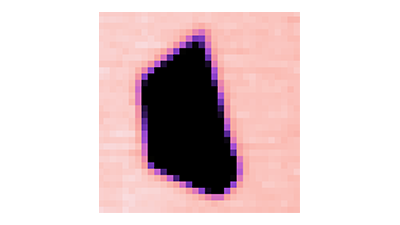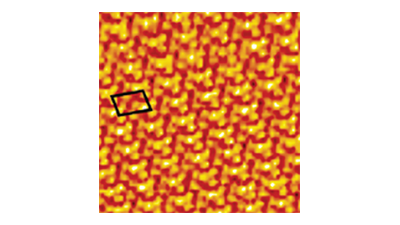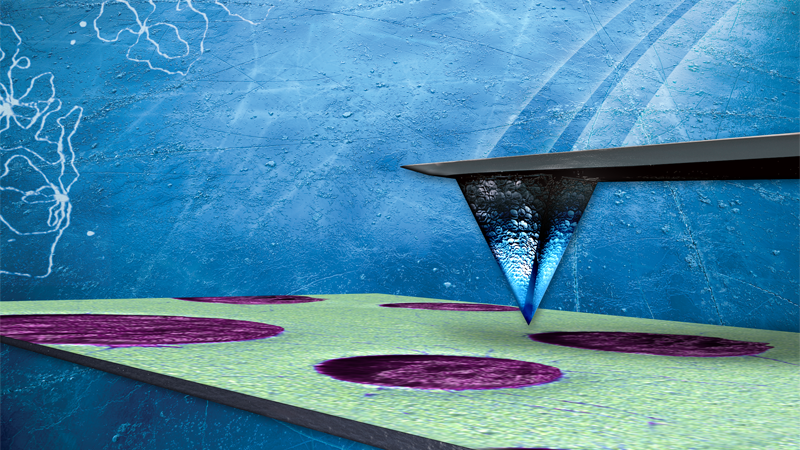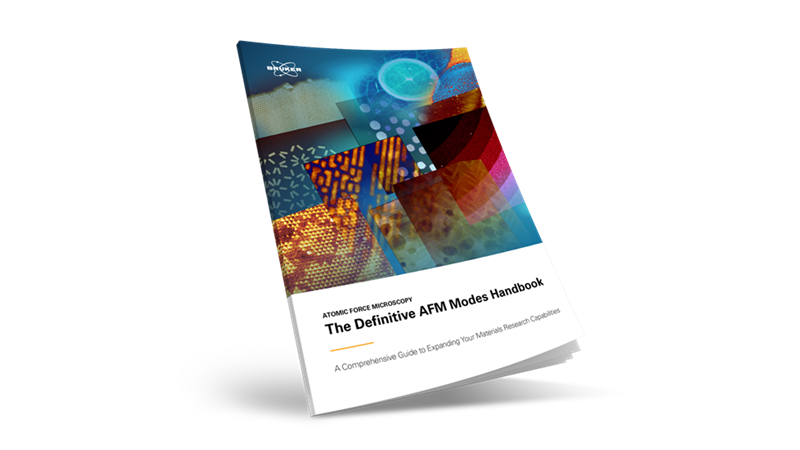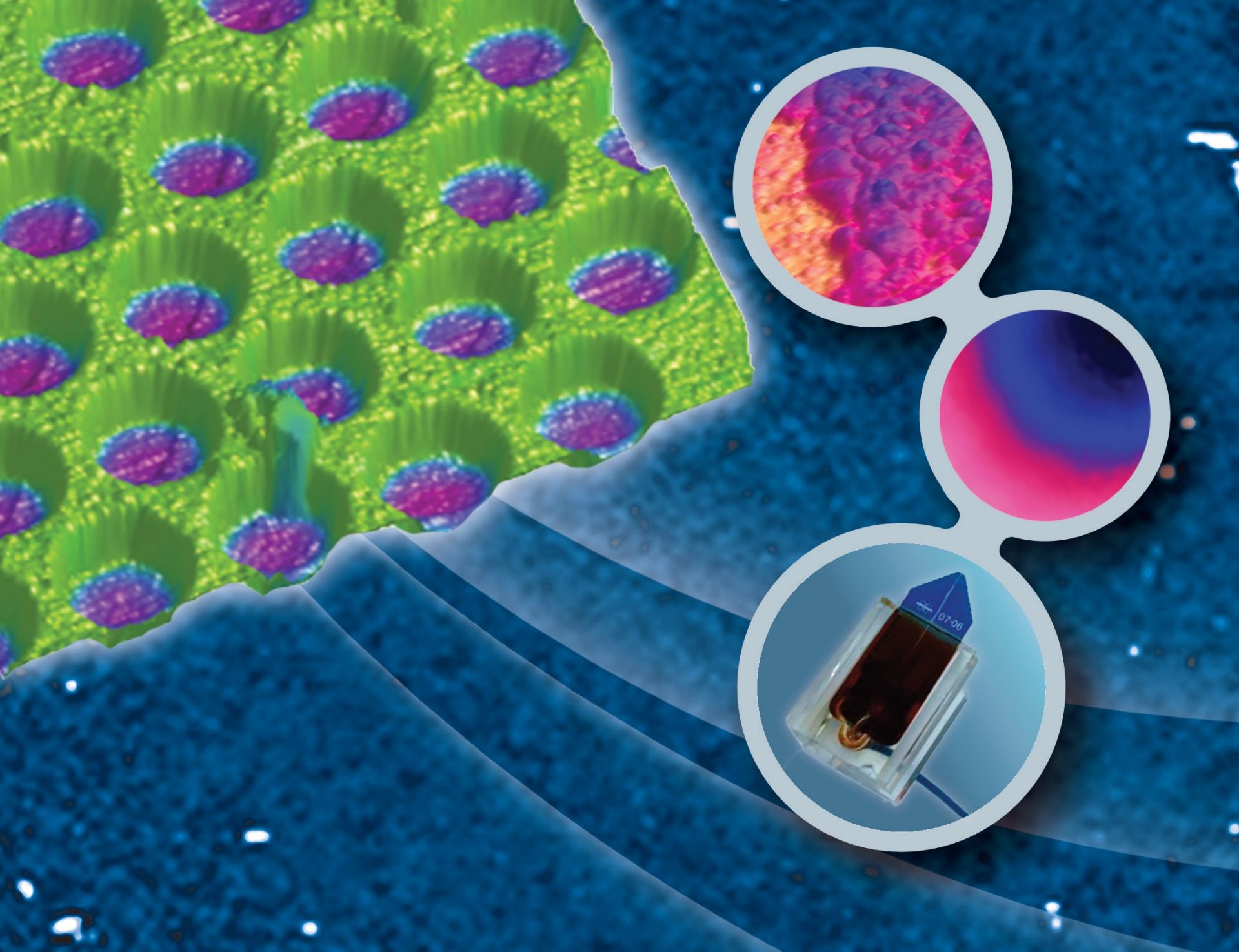

Nanoelectrics at Electrified Solid/Liquid Interfaces
Learn about solar water splitting research and the new capabilities for nanoelectrical characterization in liquid.
In this 2-presentation webinar, speakers discuss (1) fundamental aspects and capabilities of the probes used to measure interfacial charge transfer at the semiconductor-catalyst-interface and (2) new capabilities for nanoelectrical characterization in liquid.
Webinar Summary
In this two-presentation webinar, our speakers discuss:
- The fundamental aspects and capabilities of the probes used to measure interfacial charge transfer at the semiconductor-catalyst interface – an issue that is central for solar water splitting yet has been poorly understood.
- The new capabilities for nanoelectrical characterization in liquid made possible by Bruker's instruments, including: insulated nanoelectrode AFM-SECM tips (the first and only commercial solution for nanoscale electrical characterization in liquid), and electrical DataCube modes that provide an entire force and electrical spectrum at every pixel.
In the first part of the presentation, Michael Nellist (Ph.D. student at the University of Oregon) explains how the pursuit of new insights in solar water splitting research requires unique experimental approaches — including using nanoelectrode AFM-SECM probes, to scan the surface of water-splitting photoanodes, and making in-operando local surface potential measurements. This part of the webinar also explores interfacial charge transfer at the semiconductor-catalyst interface, an issue that is central for solar water splitting yet has been poorly understood. This presentation describes the relevant applications in context alongside the fundamental aspects and capabilities of the probes used. To accomplish this, the speaker reviews:
- How the AFM-SECM technique allows for measurement of the surface potential and thickness-dependent electronic properties of cobalt (oxy)hydroxide phosphate (CoPi).
- The ways that, when CoPi is deposited on illuminated photoanodes like hematite (a-Fe2O3), it acts as both a hole collector and an oxygen evolution catalyst.
In the second part of the presentation, Dr. Teddy Huang (Bruker) explores why nanoscale electrical measurements with AFM are common in air, yet extremely challenging in liquid, as well as the new capabilities for nanoelectrical characterization in liquid provided by Bruker's AFM instruments.
This webinar demonstrates how Bruker's AFM innovations enable a whole range of new electrical measurements in liquid, including in-situ piezoelectric response, conductivity and Kelvin probe force mapping, with benefits for research in solar water splitting and other diverse applications such as Li-ion batteries, electrocatalysis, to semiconductors, and bioelectricity.
This webinar was presented on: June 7, 2018
Find out more more the featured AFM products and services in this webinar:
Speakers
Dr. Teddy Huang
Staff Development Applications Scientist, Bruker Nano Surfaces
Dr. Huang obtained his PhD degree in physical chemistry from Emory University in 2012. After graduation, he worked for Prof. Nathan Lewis at Caltech as a postdoctoral scholar, where he investigated the semiconductor/metal interfacial structure using AFM nanoelectric measurements. He joined in Bruker in 2014 and now leads the team for development of AFM-based electrical and electrochemical applications. As of today, he has published 43 peer-reviewed articles with more than 2300 citations and an H-index of 22.
Michael Nellist
Ph.D. student, University of Oregon
Michael Nellist is a Ph.D. student in Prof. Shannon Boettcher’s lab at the University of Oregon. His graduate work has been focused on better understanding the charge transfer processes that take place at the semiconductor-catalyst interface at photoanodes for water splitting. Michael earned his B.S. in Chemistry from SUNY Geneseo.

